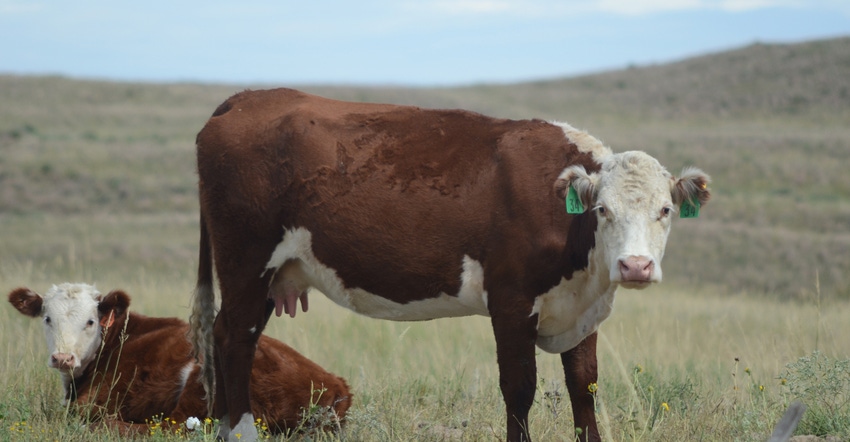March 13, 2019

As spring nears and grass begins to turn green, producers are eager to get cows out to grass. However, cool-season predominate areas tend to have lush spring growth that can lead to grass tetany in cows. While there are treatments for cows when symptoms are caught quickly, prevention always is the best policy.
Grass tetany occurs when circulating magnesium is low in the beef animal. Symptoms include staggering, convulsions, excitability and twitching, and can result in death. While the disease can affect growing cattle, it generally affects older lactating cows.
The magnesium requirement in the pregnant cow is 0.12% of the diet on a dry matter basis and jumps to 0.2% with lactation. Moreover, the magnesium in colostrum is three times what it is in the milk the rest of the lactation.
Additionally, unlike some other minerals, magnesium is not stored and mobilized in the tissues for times when it is deficient in the diet. Magnesium is absorbed across the rumen wall, and how much magnesium is circulating in the blood is highly dependent upon how much was consumed.
In addition to the fact that the magnesium requirement increases with lactation, if the feed is high in potassium or nitrogen — as many lush growing forages can be — then magnesium absorption can be compromised as well. Cool, cloudy days associated with wet springs often increase the risk of grass tetany problems.
To help prevent problems with grass tetany, producers should start providing a high magnesium mineral to cows about a month before turning out on lush pasture to get them used to consuming it, and continue to provide a high magnesium supplement until grass starts to elongate and mature and the risk of grass tetany is low.
While providing high magnesium minerals helps reduce the incidence of grass tetany, producers should talk to their local veterinarian and have a treatment plan in place for cows who do succumb to grass tetany, as treatment must take place quickly in those cows.
For information on mineral and vitamin needs of beef cattle, visit Nebraska EC288, Minerals and Vitamins for Beef Cows.
Jenkins is a Nebraska Extension cow-calf systems and stocker management specialist.
This report comes from UNL BeefWatch, which is solely responsible for the information provided and is wholly owned by the source. Informa Business Media and all its subsidiaries are not responsible for any of the content contained in this information asset.
About the Author(s)
You May Also Like




